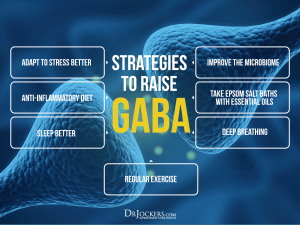
“Too much of anything is a bad thing”, right? The idea of balance is integral to our understanding of the world across different belief systems and at various levels. Yin and Yang are perhaps the most notable examples of opposite forces evening out a greater whole, but the concept guides our beliefs and actions in many ways, from how we prioritize commitments in our lives to what kinds of foods we consume. While a disrupted balance in how we live our life can certainly make us feel anxious, It turns out that internal balance plays a key role in anxiety as well, with two neurotransmitters called Glutamate and GABA keeping each other in check- or at least supposed to be.
Glutamate and GABA – How do they Relate?
In terms of anxiety, Glutamate and GABA could be considered the ‘yin’ and ‘yang’ of the central nervous system. Both are highly important for sending messages between neurons; in fact, they are responsible for over 90% of neurotransmission in the brain! They have directly opposite effects, however, with glutamate sending excitatory signals that make neurons more likely to ‘pass on a message’ and GABA sending inhibitory signals that make this communication less likely. Physiological homeostasis of the nervous system is needed for proper functioning, and it requires regulation of opposing forces such as these. So, when there is an abundance of Glutamate and low levels of GABA, stress and anxiety responses are more likely to occur.
In many areas of the brain, glutamate and GABA are intertwined within neural circuits and pathways, and this close interaction allows them to balance each other through tight regulation. For example, axons of a specific type of cell called granule cells synapse with interneurons that release GABA in the the dentate gyrus, an area of the brain’s hippocampus. The granule cells release glutamate when excited, but because the neurons they synapse on release inhibitory GABA, the glutamatergic neurons (neurons that release glutamate) that these neurons project to will in turn be inhibited. In short: excitation stimulates inhibition, and this leads to inhibition of excitation. Pathways like these provide a mechanism for regulation of anxiety, because higher levels of GABA will result in lower levels of glutamate as a way to create balance – in fact, anti-anxiety medications such as benzodiazepines work in a similar fashion to this, by enhancing inhibitory effects of GABA on glutamatergic neurons.

Another area involved in balancing these two neurotransmitters is the amygdala, whose general function is processing fearful and unpleasant stimuli. Specifically, the Basolateral nucleus (BLA), Central Amygdala (CeA) and Bed Nucleus of Stria Terminalis (BNST), are all locations involved within the amygdala. Glutamatergic neurons in the BLA are regulated by GABAergic interneurons that lie within this area as well. The CeA has only GABAergic neurons and receives input from the BLA. All of these connections and communications serve to modulate balance of GABA in the amygdala, with GABAergic neurotransmission helping to inhibit the amygdala’s interaction with stress and anxiety. On the flip side, however, stress may cause interneuronal networks to reduce, which disrupts the excitatory and inhibitory balance and can therefore lead to neuropsychiatric disorders. Animal studies back this up: in one experiment, for example, subjecting rats to social isolation reduced the expression of GABAergic neurons in the BLA.
Balance on a Societal Scale
While these physiological mechanisms certainly offer insight for how anxiety responses can be regulated or dysregulated in the brain, they do not explain the rapidly rising rates of mental illness in the U.S. On a societal level, the argument has been made that people with mental disorders such as anxiety and depression are “canaries” of our cultural coal mine. Just like canaries were said to warn miners of an incoming explosion by singing, people suffering from mental illness are early warning signs of imbalance in society. The canaries did not survive the explosions, and people with mental health problems are victims of what some might view as an impending ‘cultural collapse’. I’ve always held the view that the ultimate priority should be fixing the underlying problems, not masking the symptoms. So, if the ‘canary in a coal mine’ hypothesis is correct, what could be causing the degradation of balance and harmony in the U.S? I’ve seen fingers pointed at many different elements in society, ranging from stress to technology to consumerism. Let me know what you think could be behind the rise of anxiety and other mental disorders in the comments!